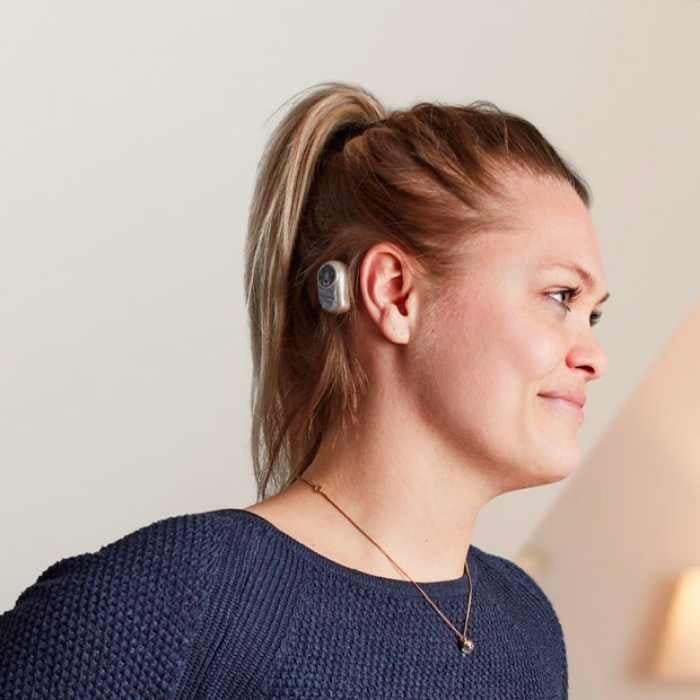Key Takeaways:
- A bone-anchored hearing aid (BAHA) is an option for conductive hearing loss.
- Cochlear Americas, Oticon Medical, and Med-El offer bone-anchored hearing solutions.
- Reach out to an audiology clinic to find out if you're a candidate.

You may be familiar with traditional hearing aids. But have you heard about bone anchored hearing aids?
These devices are designed to work well for those who cannot wear conventional hearing aids due to middle ear disease or conductive hearing loss. Additionally, they also work for single-sided deafness (SSD).
In this guide we'll break it all down and compare BAHA to cochlear implants and traditional hearing aids.
How do BAHAs Work?
Have you worn a pair of earplugs and tried conversing with them in your ears? You probably noticed that it was harder to hear what other people were saying while your own voice seemed louder.
When you wear earplugs, you’re giving yourself a (temporary) type of conductive hearing loss.
The inner ear works normally with conductive hearing loss, but something like fluid or bone growth distorts the sound while it is still traveling through the outer ear.
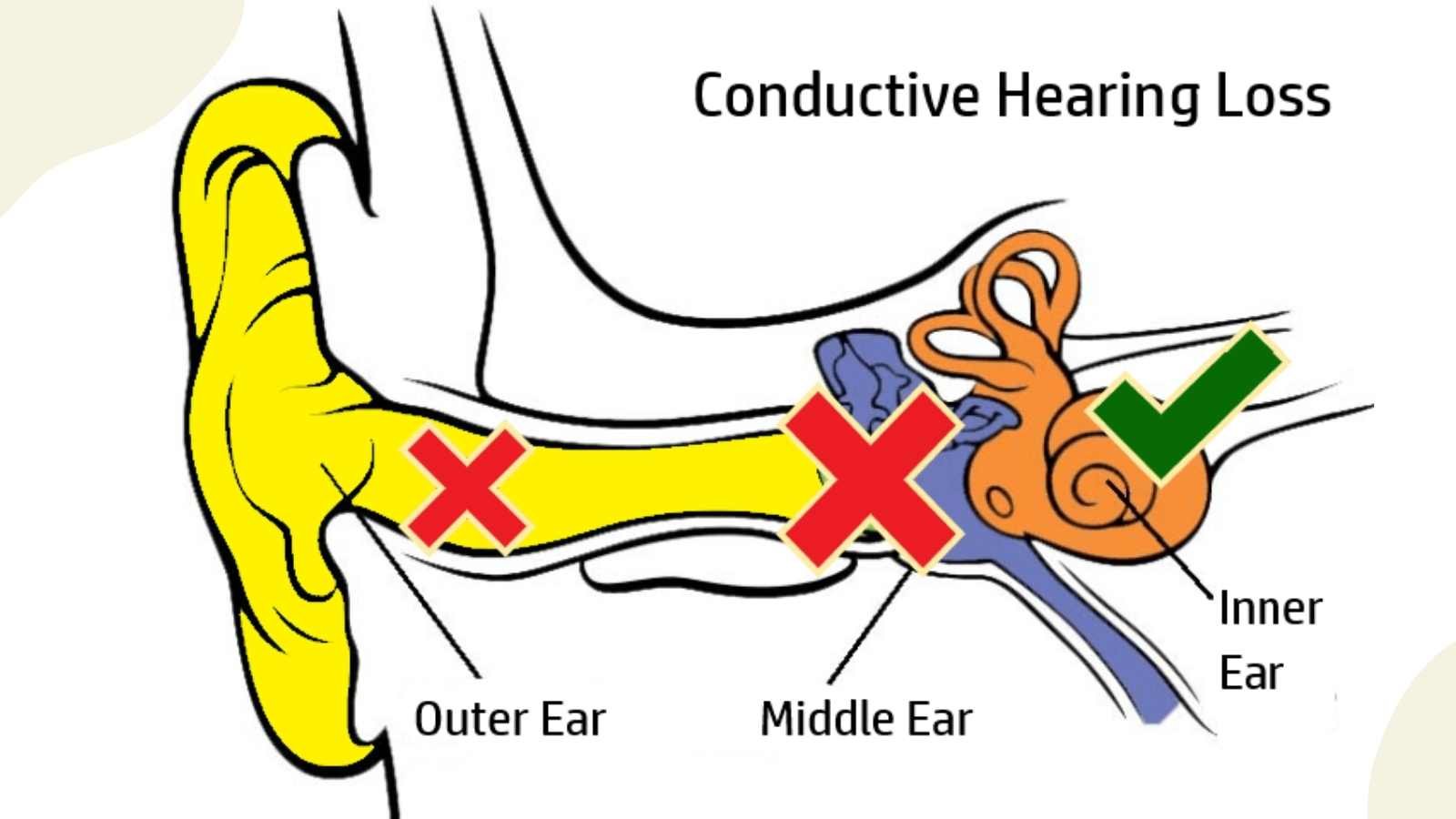
This type of hearing loss can be overcome through increased volume (a traditional hearing aid) or directly stimulating the middle and inner ear through a bone anchored hearing aid (BAHA).
For those with conductive hearing loss, a BAHA provides a much “cleaner” sound because of direct access to the inner part of the ear.
Wait, we can hear through our skull?
Yes, actually. The three smallest bones in your body are located in the middle ear, right next to the inner ear.
When those bones move through the nearby skull, a chain reaction occurs, and the ear perceives it as sound. Isn’t that cool?
Bone anchored hearing aids use this principle and consist of two parts: a sound processor and a bone-anchored plate or abutment that attaches to the processor.
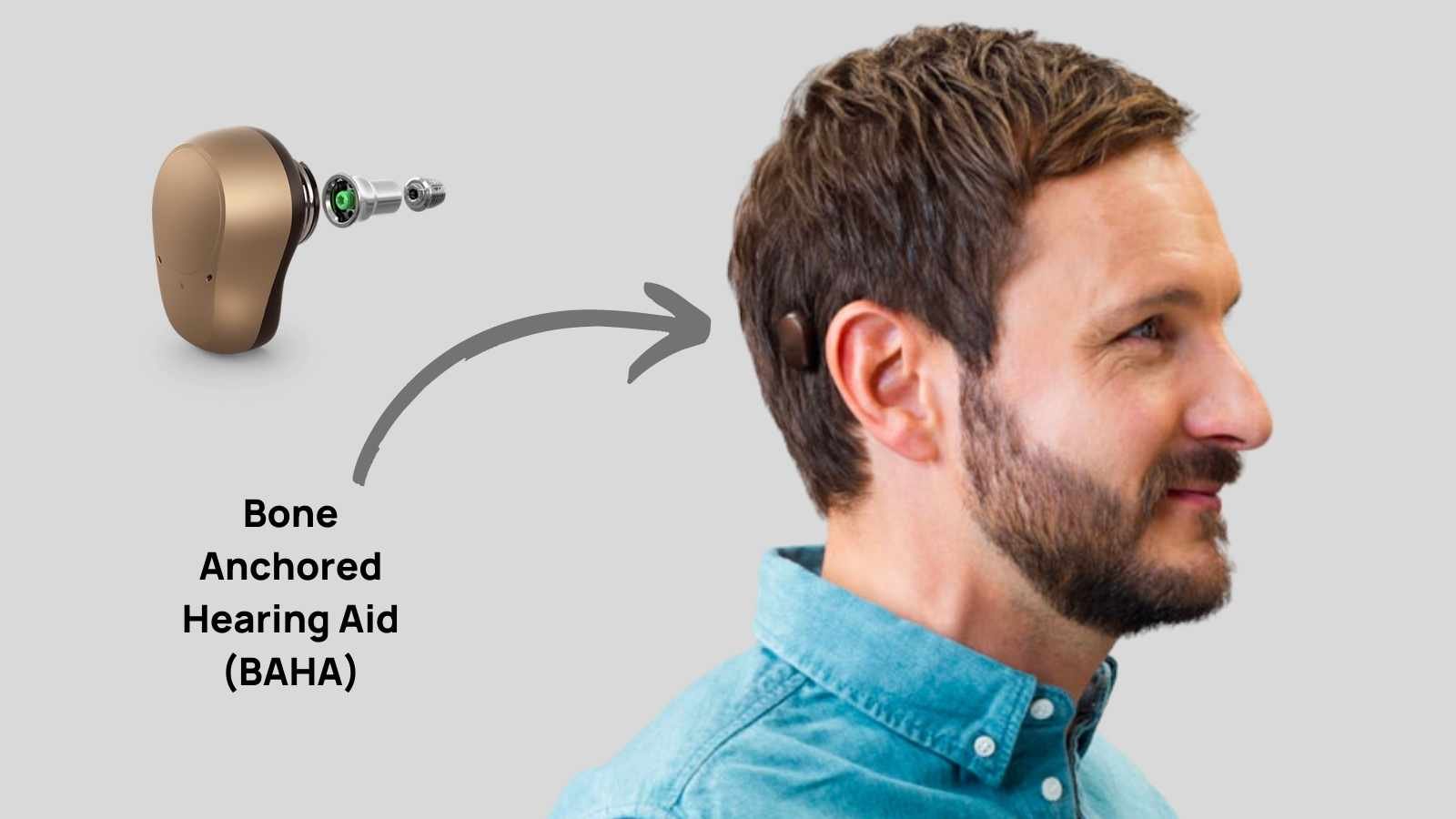
A BAHA involves a surgery to place either an abutment (small screw) or magnetic plate into the bone behind the ear.
Following placement of the bone-anchored component, it will take about four weeks for the bone to integrate with the new component.
After this process, also known as osseointegration, the sound processor can be programmed and activated.
Bone Anchored Hearing Aid (BAHA) vs. Cochlear Implant
Ok, so we’ve reviewed what a BAHA is and how it works. You might wonder what the difference between a BAHA and a cochlear implant is. Choosing one option over the other involves a few considerations; let’s take a closer look.
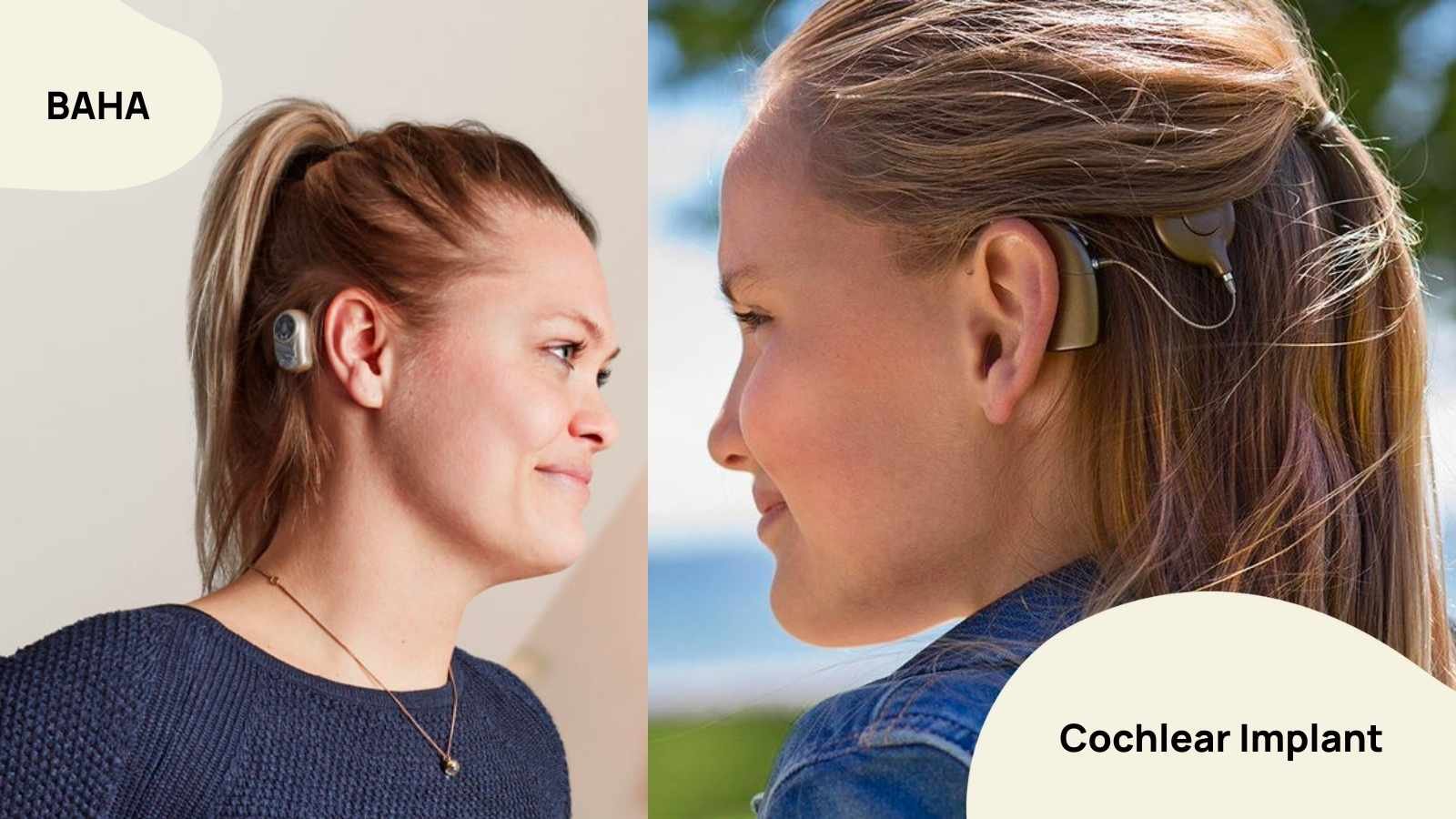
The primary goal of a BAHA is to overcome conductive hearing loss or send sound through the bones of the skull into the ear. Once the processor is activated and placed on the abutment, the sound is immediately clear.
However, a cochlear implant works by a completely different mechanism. Unlike a BAHA, a cochlear implant can restore hearing to an ear with significant sensorineural hearing loss. Read more about sensorineural hearing loss here.
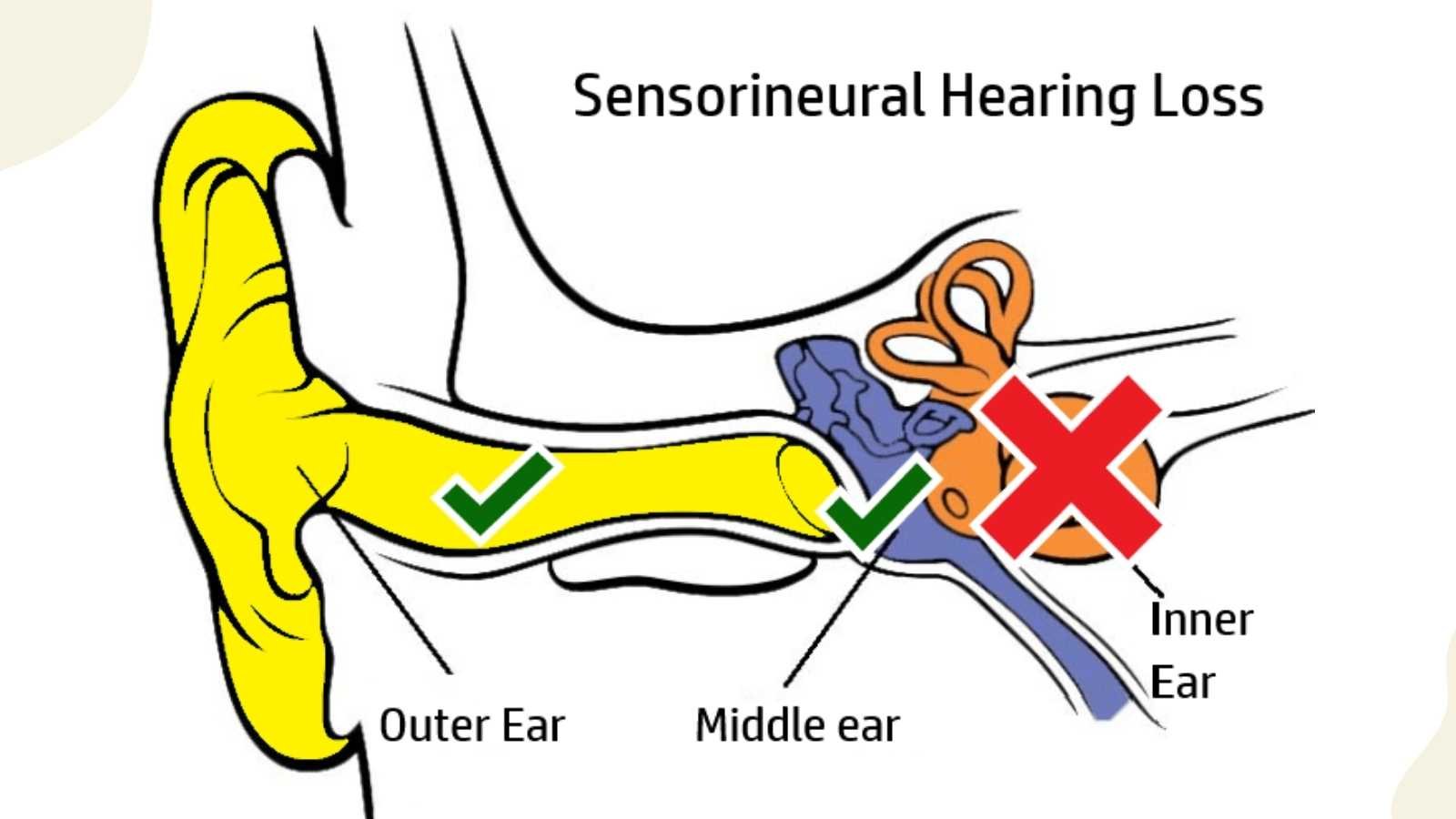
A cochlear implant involves a more invasive surgery, during which an electrode array is inserted into the inner ear (cochlea). Following this procedure, there will also be a period of healing before the device is activated for the first time.
It’s important to note that adjusting to a cochlear implant involves rehabilitation. This means there will be a period when the ear and brain relearn what sound is.
For example, imagine hearing a foreign language you can’t understand. You can hear all of the sounds of that language, but actually understanding what they mean takes time. This is a good analogy for what it’s like to learn how to hear with a cochlear implant.
From the outside, a cochlear implant and a BAHA look somewhat similar. Each has an external and internal component.
However, a BAHA enhances the current, functional architecture of the ear by going around the outer and middle ear to the inner ear.
By contrast, a cochlear implant is a new way of electrically hearing, bypassing the damaged inner ear.
BAHA and cochlear implants might both be considered for those that have single-sided deafness. The use of BAHA allows the better ear to pick up the sounds from the poorer hearing side through vibrations to the skull. A cochlear implant is a way to revive hearing in the poorer ear
BAHAs vs. Traditional Hearing Aids
For some people with conductive or mixed hearing loss, both a hearing aid and a BAHA can provide sufficient benefit.
However, a BAHA will typically sound better for someone with conductive hearing loss because the way it reaches the ear is more direct than sending the sound to the outer and middle ear first.
Additionally, for someone with SSD, a traditional hearing aid is not an option to wear on the poorer ear.
If the poorer ear is not able to adequately hear or make use of speech or sound, a traditional hearing aid won’t provide benefit.
The nice thing about the BAHA is that it moves the bones of the skull, which means that the better ear can hear and pick up on it. (The better ear will always pick up the sound from the skull vibration.)
Finally, insurance coverage is another reason that people choose a BAHA over a traditional hearing aid. Before deciding which will work best for your situation, it’s important to consider the pros and cons of each option.
Even if the out-of-pocket costs for a hearing aid are significantly more than a BAHA, you still want to consider how you will feel about going forward with a surgical procedure and whether you will receive a sufficient benefit.
Who Is a BAHA Best for?

A BAHA will work for people with mixed or conductive hearing loss or those with SSD. A BAHA candidate needs to be over the age of five due to bone growth and bone density requirements for surgery.
If a child has a history of conductive hearing loss or ear infections, another way to wear a BAHA is by using a softband to hold it in place on the head. Then, the surgery can take place when the child is old enough.
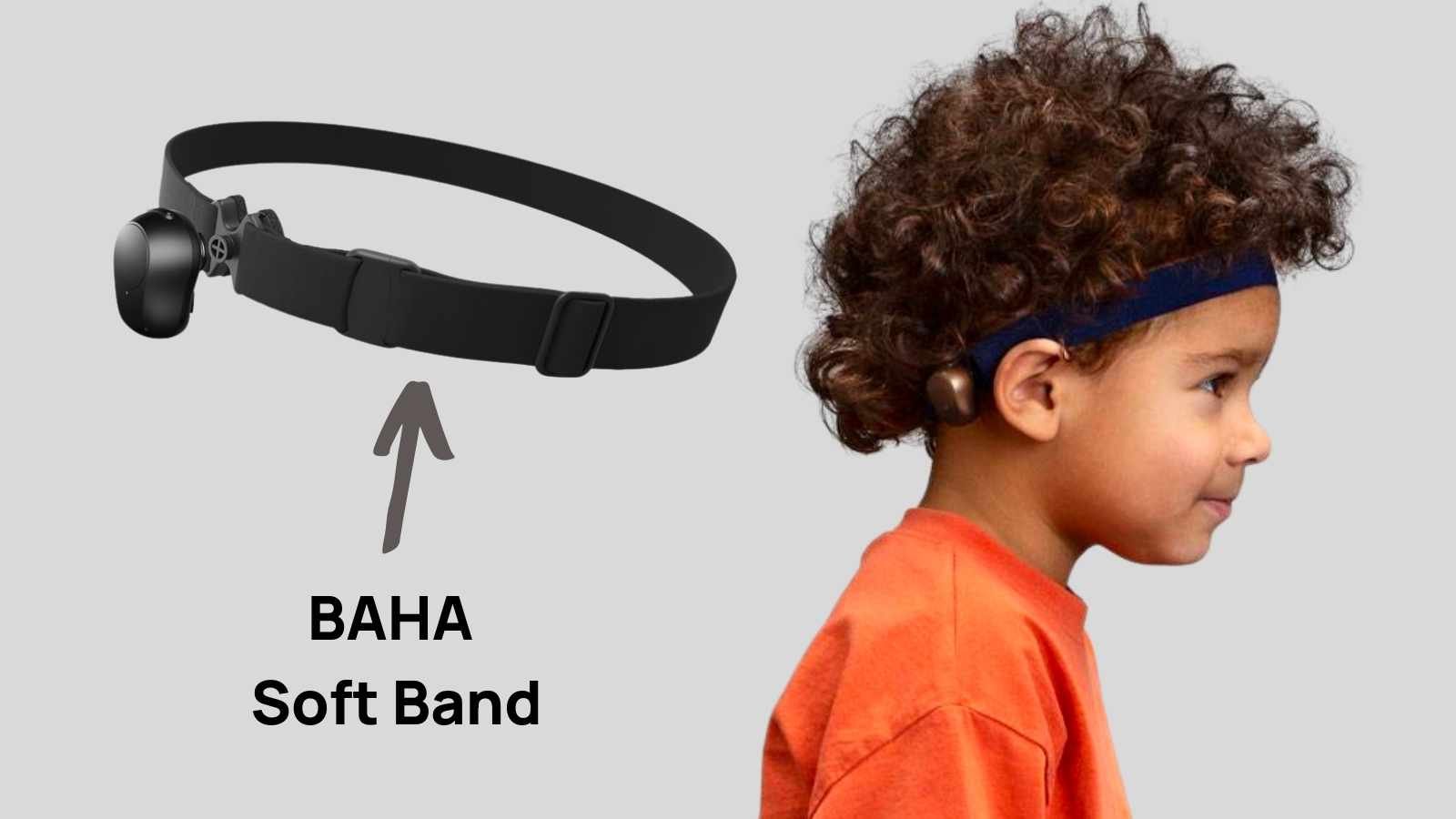
For those with single-sided deafness, a CROS hearing aid can also work well. Not sure about what a CROS is? Read more here.
A non-surgical version of a BAHA can, and should, also be trialed first before proceeding with a BAHA.
What Brands Make Bone Anchored Hearing Aids?
Cochlear Americas
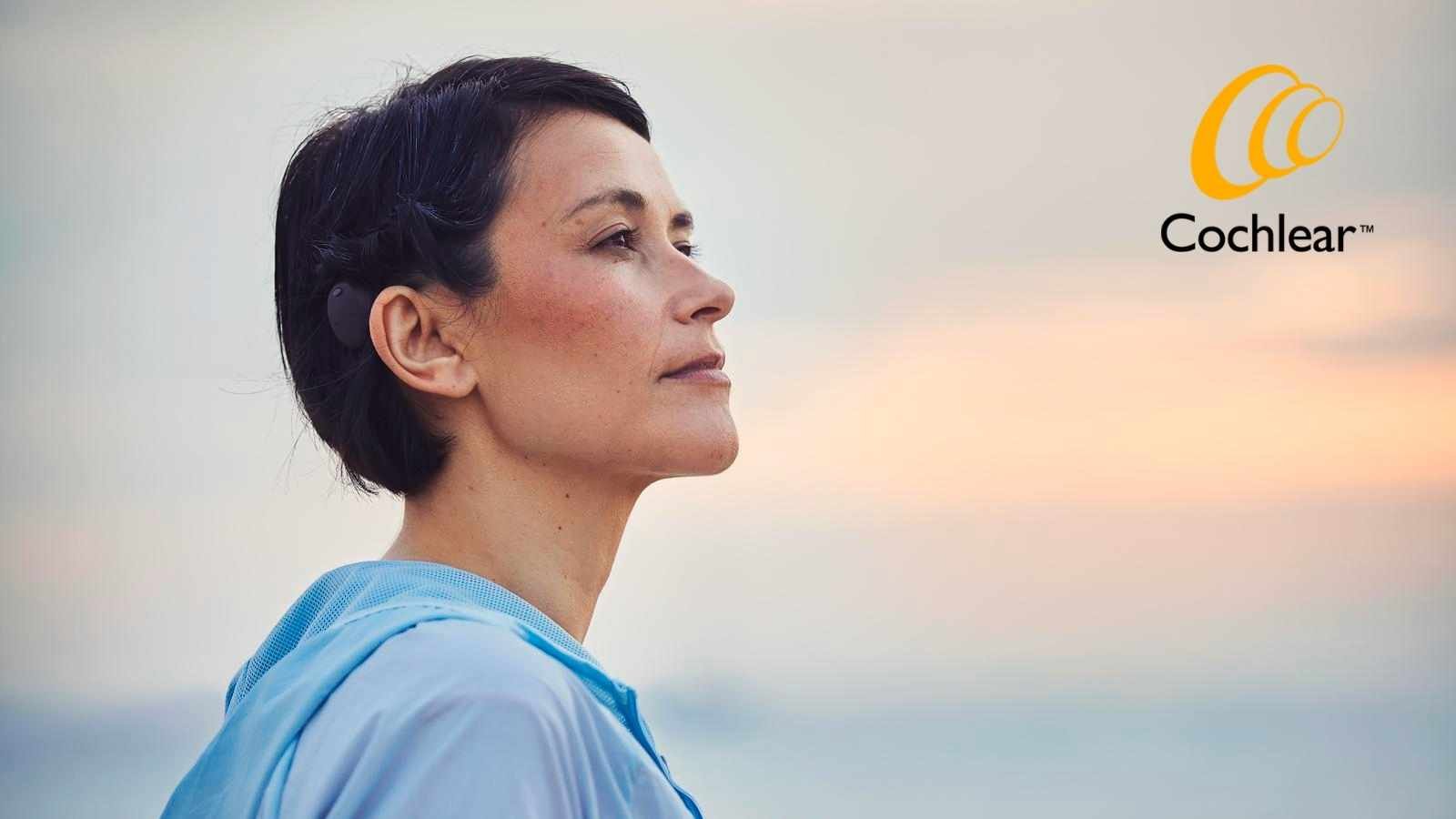
Cochlear is a company that produces devices that help people with hearing loss. They offer both BAHA and cochlear implants. Cochlear produces a variety of bone conduction solutions devices that help people with a range of hearing loss. Cochlear offers both a magnetic BAHA (Osia) as well as a BAHA with an abutment.
Oticon Medical
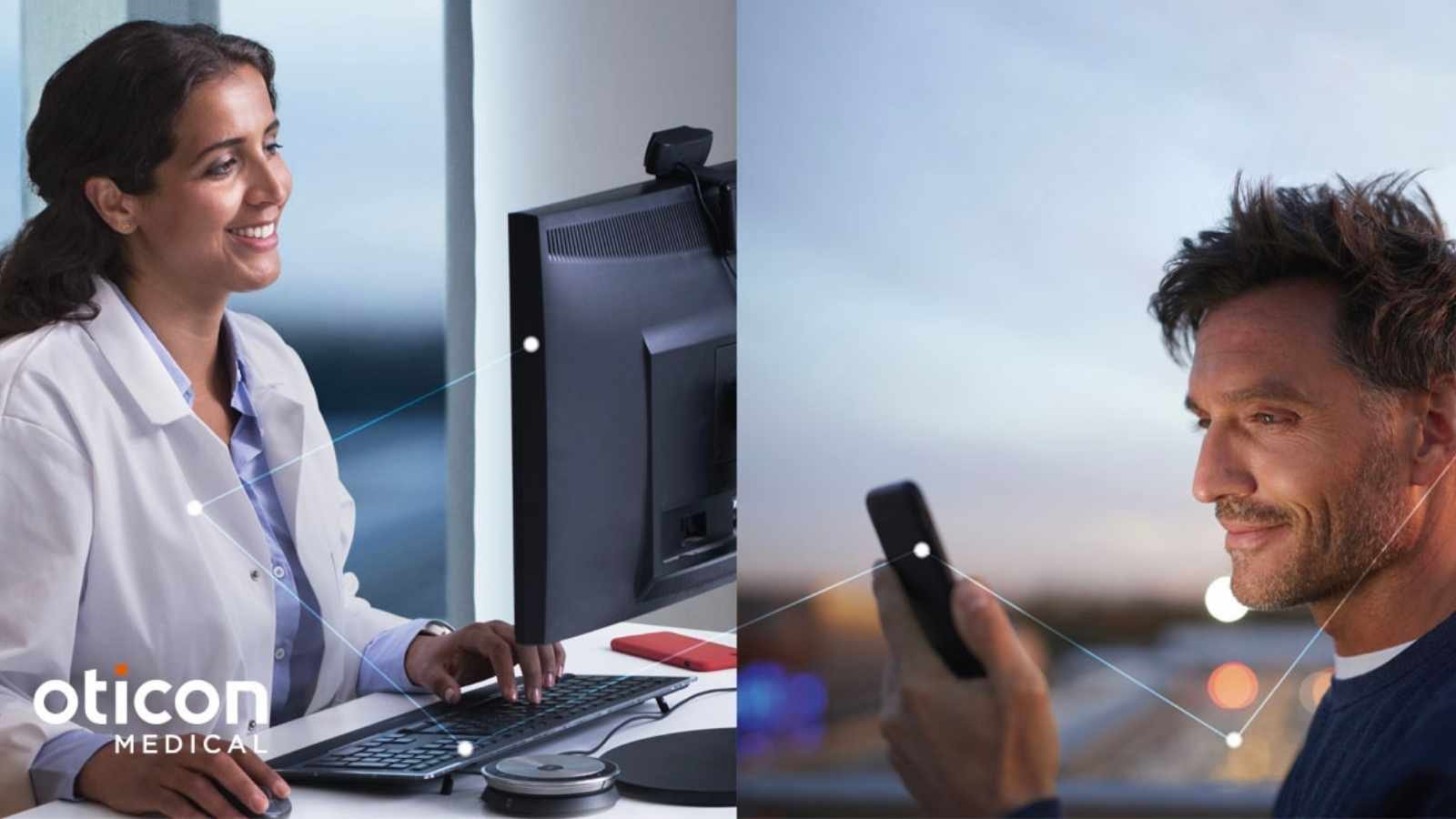
Oticon Medical is a company that specializes in bone conduction solution devices and is in the same family of products as Oticon hearing aids. Oticon was founded by Hans Demant in the early 1900s and is dedicated to high-quality standards for hearing care products.
Note: Oticon Medical announced several months ago that it would merge with or be acquired by Cochlear.
Med-El Bone Bridge

Med-El makes both BAHAs as well as cochlear implants. Based in Austria, the company was founded by Ingeborg and Erwin Hochmair in the 1970s. The Med-El Bone Bridge, called Samba 2, is worn with a magnet placed below the skin rather than an external post or abutment.
How to Get Bone Anchored Hearing Aids and How Much Does It Cost?
Getting a BAHA will involve a visit to a specialized ear clinic. Typically, a Neurotology clinic specializing in ear surgeries and managing ear disease will be the best place to start. Your first appointment will typically include a comprehensive hearing evaluation and a neurotologist visit.
- At the clinic, the neurotologist will evaluate your hearing loss, medical or surgical history of your ears, and current health of the middle ear.
- The doctor will then advise whether a BAHA is an appropriate treatment option and go over the surgical procedure process.
- Then, you’ll meet with an audiologist to discuss your hearing loss and select a device, color, and accessory for the order.
- During the visit with the audiologist, they may place a BAHA demo device on a special headband to give you a sense of what the device could sound like.
- Take advantage of this, as this demo can give you a glimpse into what this device will be like for you following surgery.
- As for cost, this will vary depending on insurance coverage. Co-insurance for some insurance policies will be 20%, while some cover the procedure fully.
- CareCredit published research suggesting that bone anchored hearing aids cost between $10,000-$17,000 but might significantly offset by insurance.
- Regardless of insurance coverage for the surgery and device, one point to be aware of is that there will likely be a fee for the audiology fitting appointment. It’s best to check with your audiologist regarding expected out-of-pocket costs for the fitting appointment.
Final Thoughts
Bone anchored hearing aids work well for those with middle ear disease or conductive hearing loss and are even a treatment option for SSD.
Contact an ENT or Neurotology clinic if you are interested in learning more about bone anchored hearing aids.



